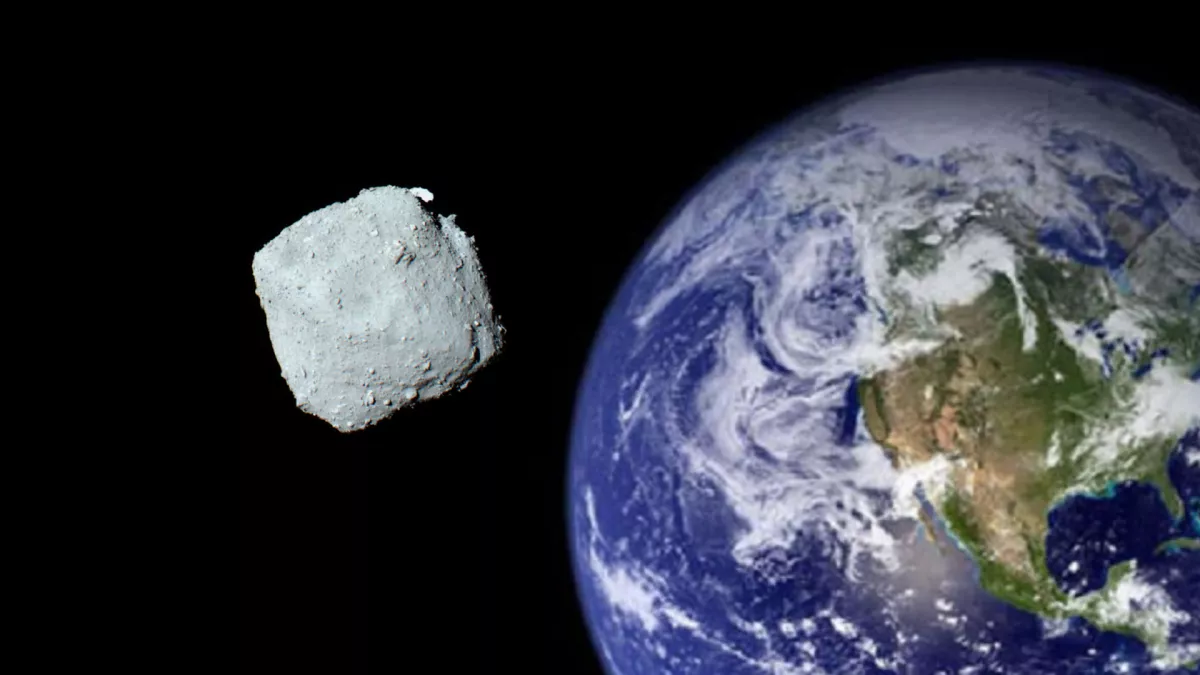Particles of celestial body matter 900 meters high delivered to Earth preserved not only the memory of their interplanetary journey, but also the memory of how the planets themselves arose. Since the Japanese probe “Hayabusa-2” dropped a capsule containing the soil of the Ryugu asteroid onto Earth in 2020, interplanetary scale exploration has begun. It turns out that just five grams of matter in the form of an ordinary gray block in space can help reconstruct the picture of events of the last 4.5 billion years.
Subscribe to our Telegram channel
Ryugu orbits the Sun and crosses the orbits of Earth and Mars during each revolution. Its structure is loose. As planetary scientists say, they’re just a bunch of small rocks clumped together by gravity. They even coined the term rubble pile for such objects.
Researchers hypothesize that Ryugu moved to our land from the Main Asteroid Belt, located between Mars and Jupiter, and spent most of its life there. But it seems that it was “born” even further away – somewhere on the outskirts of Saturn, maybe even on Uranus or Neptune.
From the black color of the delivered grains, it was understood that Ryugu was rich in carbon. They then found in its substance a number of various organic substances, in particular amino acids, which must be formed in the presence of water. In all this, it resembles meteorites of Сl-chondrites, a rare and extremely interesting species. Scientists are sure that objects with such a chemical composition cannot be formed at temperatures above plus 50 degrees Celsius, for this it was necessary to be at a considerable distance from the Sun. Additionally, Ryugu’s soil is very fine-grained, and due to heating in the immediate vicinity of our star, particles of much larger sizes are formed.
Also read – Astronomers urge FCC to stop mass launches of megasatellites
Astronomers concluded that the asteroid was originally part of a larger, water-rich parent body somewhere in the outer solar system. Then it collided with something else, and what emerged from the pile of debris emerged.
Now another chapter emerges in this scenario: the story of what happened to Ryuga even before the journey began. Scientists from the Massachusetts Institute of Technology (USA), together with colleagues from different countries, said that the asteroid “recorded” the birth of planets in the Solar System. In an article to be published AGU Developments They reported measuring the magnetic field strength of Ryugu particles and finding that the ambient magnetic field in its “native region” at the dawn of the solar system was weak, less than 15.8 microtesla.
This is another proof that the asteroid came from far away. Previously, planetary scientists had compared the magnetic field of many meteorites falling to Earth, apparently occurring in the inner solar system. It turns out that the electromagnetic field is much stronger near the star.
Magnetism played an important role in the formation of planets: it affected the distribution of matter in the protoplanetary disk and helped form clusters inside which were future worlds. According to planetary scientists, the “homeland” of the Ryugu asteroid was relatively weak, but it was still acceptable for planets to appear there.













